Drew was not the only one who aimed at responding to Adam’s racist collection. William Lloyd Garrison took the chance to reprint in The Liberator a sheer critique that had already appeared in the Christian Examiner , one of the most well-known magazines that supported the antislavery movement, though fully opposed to Garrison’s fanatic abolitionism. Besides, the very same year in which A South-Side View was published, George Fitzhugh’s Sociology for the South; or the Failure of Free Society came to light with the same racist views that also sparked the anger of abolitionists. To make matters worse, in that same year, a runaway slave named Anthony Burns was captured and finally convicted under the premises of the Fugitive Slave Law. The atmosphere was getting more and more disturbing, and it definitely seemed convincing that “if the observations of Adams and Fitzhugh gained increase acceptance, then slavery, supported by congressional compromise and armed force, might indeed become further entrenched” (Edelstein xv). Drew needed no other impulse and proceeded to depart for Canada willing to reveal the true side of fugitive slaves.
Benjamin Drew appraised that there could be around thirty thousand fugitive slaves in Canada when he got there in 1855. Most of them had settled in Upper Canada (West) and on the east by New York. Although the vast majority of slaves fled to Canada to escape from the hardships of southern slavery, they also admitted that they had left the north because legal or extra-legal discrimination against free of fugitive Blacks was very much practiced. Drew left for Canada with the idea of finding fugitive slaves enjoying freedom and who had become proper citizens of British North America, and who had left behind the suffocating reality of oppression and heightening discrimination. Since the largest wave of African American slaves that slipped away toward Canada followed the passage of the Fugitive Slave Law of 1850, it meant that the difference between the reality lived in the United States and that in its northern neighbor should be shown.
To prepare his trip and gather information for his book, Drew bore with him letters of introduction by the well-known abolitionists William Lloyd Garrison, Theodore Parker, and some other Massachusetts abolitionist leaders. But, as Edelstein affirms, “perhaps his most valuable Canadian contact was a white man, the reverend Hiram Wilson, formerly one of the group of students and teachers at Lane Seminary in Cincinnati who had withdrawn from school when antislavery preaching was forbidden” (xviii). Wilson himself, the reverend Theodore Weld and other colleagues had become an important group of early religious leaders of the antislavery movement. In fact, the religious nature of this group of abolitionists, among which Benjamin Drew can also be counted, was considerably influential. In his attempt, Drew also found encouragement in the Reverend William King, who, in 1849, founded the most successful Black community in Canada called Buxton, in Elgin settlement. All these sources of inspiration illuminated Drew and served as an example to nurture a steadfast determination bathed in Christian values to denounce slavery and to expose the fugitive slaves’ free life in Canada as a direct message to the U.S.
Indeed, central to Drew’s intellectual plan to counteract slavery was to show how fugitives were performing as free people in Canada. Cognizant that for some American leaders the representatives of fugitive slaves who had started to write their personal accounts, were simply a minor representation of the ex-fugitive slaves who had been granted freedom, Drew started to muse about his own project. He was driven to overcome the suspicions that revolved around prominent exslaves like Frederick Douglass or Josiah Hensen. The mistrust came from the exceptional lives that slave narratives narrated and “the polemical quality of abolitionists and their literature,” since it could mean that “any account published under their auspices could be judged untrustworthy” and “necessarily reflecting their strong biases and projecting their propaganda” (Edelstein xx).
In view of this, Drew opted to change the perception of the slave narratives by recording the testimony of more than one hundred fugitive slaves, who, with the exception of Harriet Tubman, were totally unknown to the public. A North-Side View of Slavery: The Refugee, or the Narratives of Fugitive Slaves in Canada includes the testimonies, in a first-person narrative style, of Black men and women from fourteen Canadian communities who had been previously free or enslaved in the U.S. south. Drew transcribed their statements after visiting their communities in St Catharines, Toronto, London, Chatham, Buxton, Dresden/Dawn, Windsor, Sandwich, and Amherstburg. These Black fugitives that peopled the collection had had a vast range of occupations, and they had worked as house slaves, coopers, field hands, blacksmiths or storekeppers among others.
Another impressive characteristic that can be drawn from the book is the multiple opinions and arguments that these Black people offer. We can listen to a polyphony of voices that see slavery, racism, and discrimination from heterogeneous points of view: some feel resentful against their masters while some others are grateful to them; some wish to remain in Canada and some want to get back to the U.S. when slavery is abolished; some praise the Canadian benevolence whilst some denounce its racist practices and protest against the suspicions they arise. Yet, the most important thing, and the most interesting one, is that Drew lets them speak their minds, have their say, and in this way, we get to learn their own, and highly diverse, points of view. This is what probably gives entity to the book and serves as an underlying characteristic that allows for a redefinition of the slave narrative as a genre.
In truth, the definition of the book has stirred some problems since its polyphonic nature and the multiplicity of opinions it contains has made it difficult to determine it in literary terms. Those who have mentioned the collection’s problems with authenticity link it though, albeit indirectly, to the slave narrative tradition. Winfried Siemerling considers that “[l]ike most transcribers of slave narratives, Drew sought to maximize the impression of authenticity conveyed by his ethnographic transpositions from orality to writing” (122), but this does not necessarily mean that he refuses to acknowledge the book’s unquestionable importance. In fact, he defends that, regardless of the legitimate criticism, the collection “not only was a systematic portrayal of the black settlements and especially the conditions of the black population in Canada West, but also offered the most extensive anthology that we possess of slave narratives recorded in Canada” (Siemerling 123). For his part, George Elliott Clarke argues in the same direction and ponders that refusing to consider these types of narratives as Canadian slave narratives implies accepting that “no ex-slaves anywhere outside African America ever scribed their predicament,” and accepting this, when the history of Black Canada has been ripped open “is insupportable ” (11). Besides, Clarkes also notes, these testimonies represent a vivid example of Canadian slave narratives since Drew himself refers to them as “coloured Canadians” which demonstrates that, “as much as fugitive slaves (and free blacks) were counted as African Americans as they fled across the Niagara frontier or the Great Lakes and into British North America, they were Canadians when they agreed to speak to Drew” (Clarke, “Introduction” 11). In this way, Drew’s A North-Side View of Slavery: The Refugee, or the Narratives of Fugitive Slaves in Canada adheres to the genre of the slave narrative but offering not an isolated view, but a plethora of voices.
Читать дальше
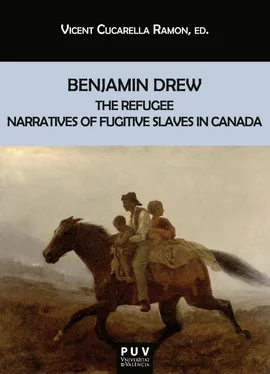



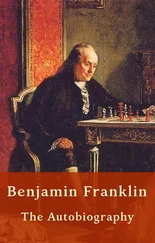
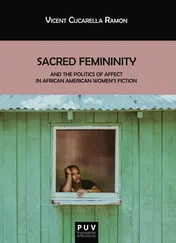


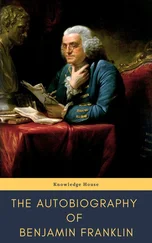

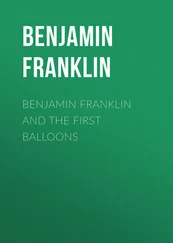
![Benjamin Franklin - Memoirs of Benjamin Franklin; Written by Himself. [Vol. 2 of 2]](/books/747975/benjamin-franklin-memoirs-of-benjamin-franklin-wr-thumb.webp)
![Benjamin Franklin - Memoirs of Benjamin Franklin; Written by Himself. [Vol. 1 of 2]](/books/748053/benjamin-franklin-memoirs-of-benjamin-franklin-wr-thumb.webp)